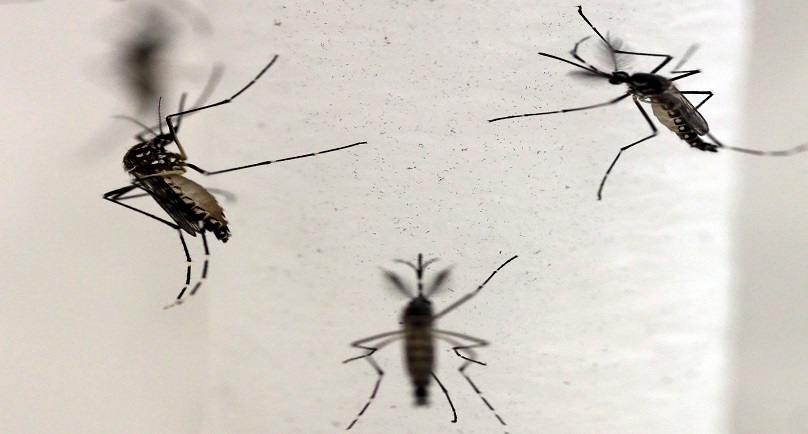Image: Aedes aegypti mosquitoes are seen inside Oxitec laboratory in Campinas, Brazil, February 2, 2016. REUTERS/Paulo Whitaker
By Shadia Nasralla
VIENNA (Reuters) – A new method to render male mosquitoes infertile by nuclear radiation could help reduce populations of the insect carrying the Zika virus that is linked to thousands of birth defects in Brazil, the U.N. atomic agency said on Tuesday.
Experts from the Vienna-based International Atomic Energy Agency are to meet Brazilian officials on Feb. 16 to discuss how best to roll out the so-called Sterile Insect Technology (SIT) in the host country of the 2016 Summer Olympics.
“If Brazil released a huge number of sterile males, it would take a few months to reduce the population, (but) it has to be combined with other methods,” IAEA Deputy Director General Aldo Malavasi told reporters.
Besides SIT, the spread of the Zika virus, which the World Health Organization has declared an international public health emergency, could be fought by more intense sanitation efforts, the use of insecticides or traps.
SIT, adapted from decades-old methods used to slash populations of other insects such as fruit flies, involves exposing males of the Aedes aegypti mosquito to X- or Gamma rays to render their sperm sterile.
Such laboratory-bred male mosquitoes could then be released in the wild to mate with the females of the species who then bear eggs that never hatch, thus reducing the number of insects in a given area without killing any animals or using chemicals.
“It’s family planning for insects,” said Jorge Hendrichs, head of the Insect Pest Control Section at the IAEA, which offers the technological know-how to interested member countries for free so they can design and run their own SIT program.
The sterile males, one generation of which takes about a month to breed, must outnumber the indigenous males by a factor of 10 or 20 to make their mark in a mosquito population.
This requires millions of males, making the method more likely to be used in villages or towns, rather than large cities, Malavasi said.
In test runs running over several months in Italy, SIT helped cut mosquito populations by around 80 percent and in China the success rate was as high as 100 percent, Konstantinos Bourtzis of the IAEA’s insect pest control laboratory said.
Apart from Brazil, other countries such as Mexico, Guatemala, El Salvador and Indonesia have also requested the technology from the IAEA to control their mosquito populations.
According to the WHO, the Zika virus is “spreading explosively” and could infect as many as 4 million people in the Americas. The Pan American Health Organization says Zika has spread in 24 nations and territories in the Americas.
(Editing by Mark Heinrich)
Copyright 2015 Thomson Reuters. Click for Restrictions.


